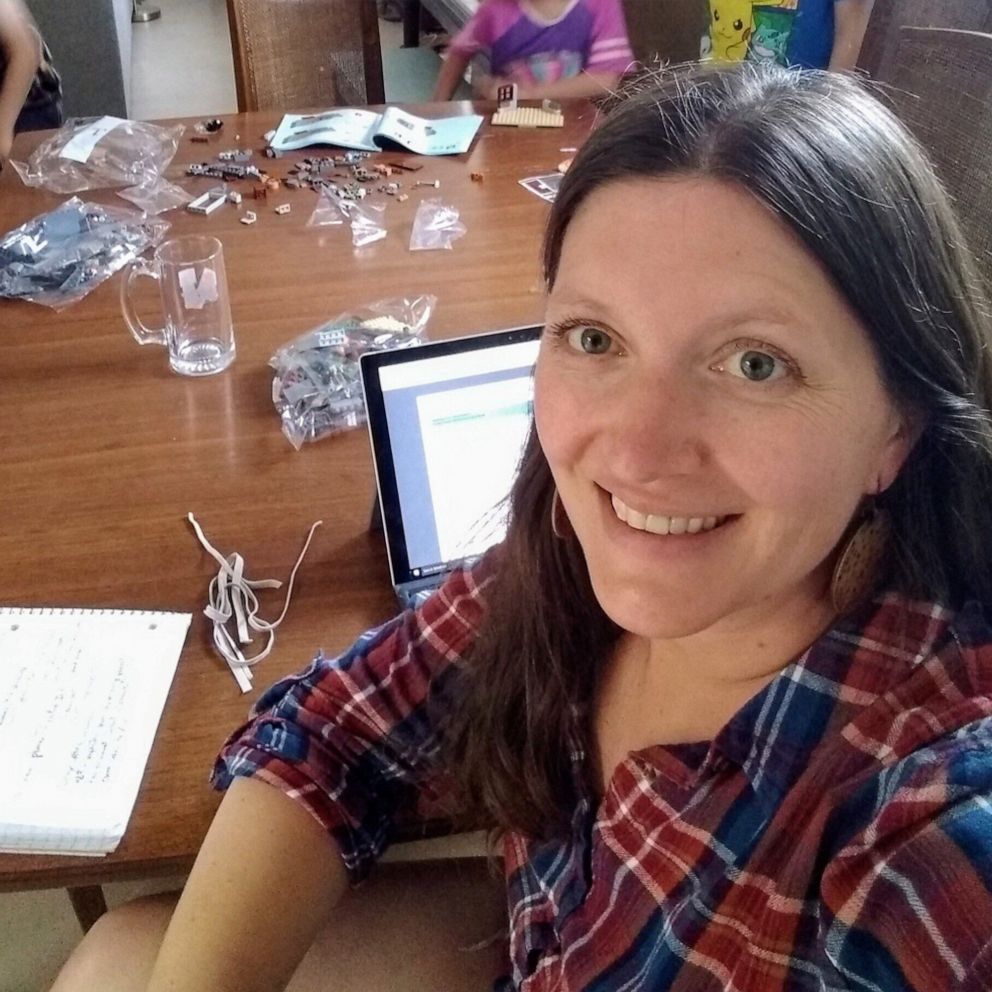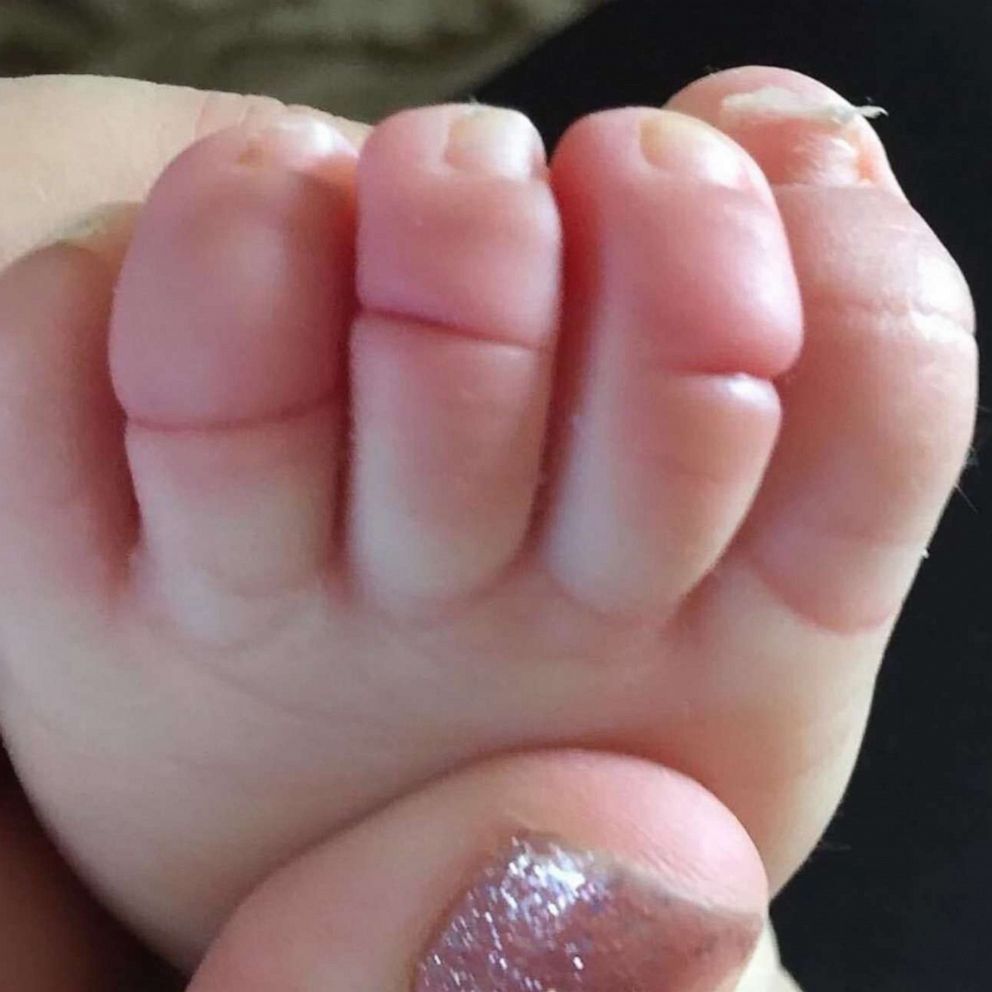Mom posts sunscreen PSA after daughter develops skin reaction
Megan Doss was at the lake when she noticed her child's face getting red.
A mom who posted a photo of her 3-year-old's apparent reaction to sunscreen is alerting parents in hopes it won't happen to another child.
Megan Doss, a mother of three from Georgia, shared the image on Monday with her 11,500 Instagram followers. Doss told "Good Morning America" that she, her husband and the children were enjoying a day at a local lake Aug. 1 when she noticed her daughter Caroline's face getting red.
"We all were doing the same thing and she was wearing a hat and a long-sleeve swimmer," Doss said. "We applied and reapplied [sunscreen] and took breaks in the shade. We were out for about five hours."
Doss said she and her family all used the same brand of SPF 50 sunscreen that day, which was marketed for use on children. She added that no one else in her family had a reaction to the product and the particular brand of sunscreen was used on Caroline's skin before.

When Doss got home, Caroline's face had swelled and yellow blisters developed. Doss said she did research on the ingredients in sunscreen and what type of reactions they may cause.
Two days later, Caroline had a surgery scheduled for an unrelated condition. Medical professionals recommended a gentle moisturizer and now, Caroline is healing with minimal scabbing.
"It was kind of one of those things as long as you watch it, and make sure it doesn't get infected, it'll be alright," Doss said, adding that she tossed the sunscreen after the incident.
Molly Stout, a dermatology resident with ABC News' Medical Unit, said by the looks of the photo and without having treated Caroline, it appears to be contact dermatitis, which can be an irritant or allergic reaction to an ingredient in sunscreen or any other personal care product.
The most common sunscreen ingredient that can cause allergic contact dermatitis is Oxybenzone, also known as Benzophenone 3, Stout noted.
"[The cause is] everything from preservatives to fragrances to maybe dyes -- especially in kids' sunscreens," Stout said.
Stout said it makes sense that this was Caroline's first-ever reaction to a sunscreen she's used before, since this type of allergy is not immediate like a peanut or latex allergy.
"This is called a delayed hypersensitivity reaction. Upon using it again, once her immune system was sensitized to it, she developed a reaction which can be confusing to people," Stout explained.
Doss said she had no idea this could happen to her child, which was why she was motivated to share the story on social media.
"She didn't even want me to wash her face or apply the medicine," Doss said. "I felt like if I could keep it from happening to one kid, I've done something."
Stout said the only way to tell which specific ingredient is causing a reaction is to have patch testing done with a dermatologist. Each patch placed on the body will have an amount of a specific chemical. When the patches are removed days later, a doctor will inspect for a localized rash under the patch.

After the culprit ingredient is identified, the dermatologist will provide a patient with a list containing hundreds of products that don't contain the ingredient he or she is allergic to, according to Stout.
Stout recommends using mineral sunscreens with zinc or titanium that have limited ingredients and are less likely to cause an allergic rash.
For people that do have have an outbreak of allergic contact dermatitis, topical steroids can help clear up a rash quickly. Speak with a dermatologist for proper recommendations.







